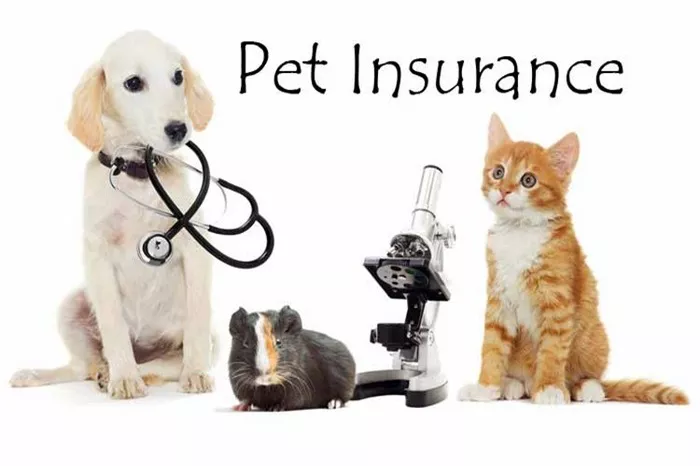Cat insurance is a crucial aspect of responsible pet ownership, providing financial protection against unexpected veterinary costs. With various types of cat insurance available, choosing the right policy for your feline friend can be overwhelming. This article will explore the different types of cat insurance, helping you make an informed decision to ensure your pet’s health and well-being.
Types of Cat Insurance
Understanding the types of cat insurance available is essential for selecting the best policy for your pet. Generally, cat insurance falls into three main categories: accident-only, time-limited, and lifetime coverage. Each type has its benefits and limitations, so let’s delve into the details.
1. Accident-Only Insurance
Accident-only insurance is the most basic type of pet insurance. This policy covers expenses related to accidents such as broken bones, poisoning, or injuries from fights. Here’s what you need to know:
Coverage Details
Accident-only insurance covers emergency treatments and surgeries resulting from accidents. It does not cover illnesses, routine check-ups, or vaccinations. This type of insurance is often more affordable than other options due to its limited scope.
Pros
Lower Premiums: Generally, accident-only policies have lower monthly premiums compared to more comprehensive plans.
Simple Coverage: Provides straightforward coverage for accidental injuries, making it easier to understand what is covered.
Cons
Limited Coverage: Excludes coverage for illnesses and routine care, which can be a significant drawback if your cat requires non-accident-related medical attention.
Not Ideal for Chronic Conditions: If your cat develops a chronic condition or illness, accident-only insurance will not provide coverage.
2. Time-Limited Insurance
Time-limited insurance offers coverage for a specified period, typically 12 months, for each condition. Here’s an overview:
Coverage Details
Time-limited insurance covers both accidents and illnesses for a set period. Once the coverage period ends, any ongoing treatment for the same condition is no longer covered. This type of policy often has a cap on the total amount that can be claimed for each condition.
Pros
Comprehensive Coverage: Includes both accidents and illnesses, making it a more robust option than accident-only policies.
Affordability: Generally more affordable than lifetime coverage policies.
Cons
Coverage Limitations: Once the time limit or financial cap is reached, you will need to cover any further expenses out of pocket.
Pre-existing Conditions: Conditions diagnosed before the policy start date are usually not covered.
See Also: What Does Lifetime Dog Insurance Mean?
3. Lifetime Insurance
Lifetime insurance is the most comprehensive type of cat insurance, offering ongoing coverage for your pet’s entire life. Here’s what you should consider:
Coverage Details
Lifetime insurance covers both accidents and illnesses for the duration of your cat’s life, provided you maintain continuous coverage. This policy offers the highest level of protection, including coverage for chronic conditions and long-term treatments.
Pros
Extensive Coverage: Provides coverage for a wide range of conditions, including long-term and chronic illnesses.
No Time Limits: Covers ongoing treatments and conditions without time constraints.
Cons
Higher Premiums: Generally, lifetime policies have higher premiums due to the comprehensive coverage they offer.
Lifetime Limits: Some policies have annual or lifetime payout limits that could affect long-term coverage.
Additional Considerations
When choosing cat insurance, several additional factors can influence your decision. Here’s what to consider:
Pre-Existing Conditions
Insurance companies typically do not cover pre-existing conditions. Ensure your cat is in good health before purchasing a policy and disclose any existing health issues to avoid coverage disputes.
Coverage Exclusions
Carefully review the policy details to understand what is excluded. Common exclusions include dental treatments, grooming, and certain hereditary conditions. Ensure the policy meets your needs and covers the essentials for your cat’s health.
Excess and Co-payments
Policies often come with an excess or co-payment requirement, meaning you will need to pay a portion of the veterinary bill out of pocket. Evaluate these costs to understand your financial commitment in the event of a claim.
Claim Process
Investigate the insurance company’s claim process. A straightforward and efficient process is essential for quick reimbursement. Check reviews and customer feedback to gauge the company’s reliability.
Conclusion
Choosing the right cat insurance involves evaluating the types of coverage, considering your cat’s health needs, and comparing different policies. Accident-only insurance is suitable for those seeking basic coverage at a lower cost, while time-limited insurance offers broader coverage but with time constraints. Lifetime insurance provides comprehensive, long-term protection but comes with higher premiums.
By understanding your options and carefully selecting a policy, you can ensure that your cat receives the best possible care while managing your financial risk. Investing in the right cat insurance will provide peace of mind, knowing that your feline friend is protected against unexpected veterinary expenses.






















